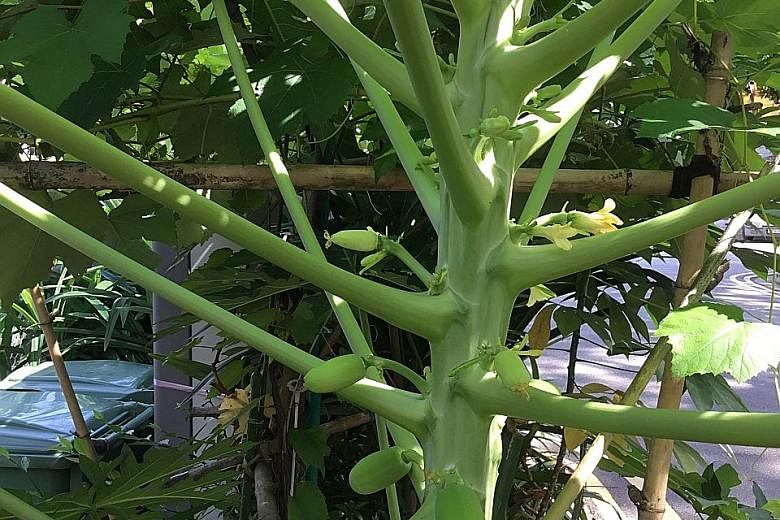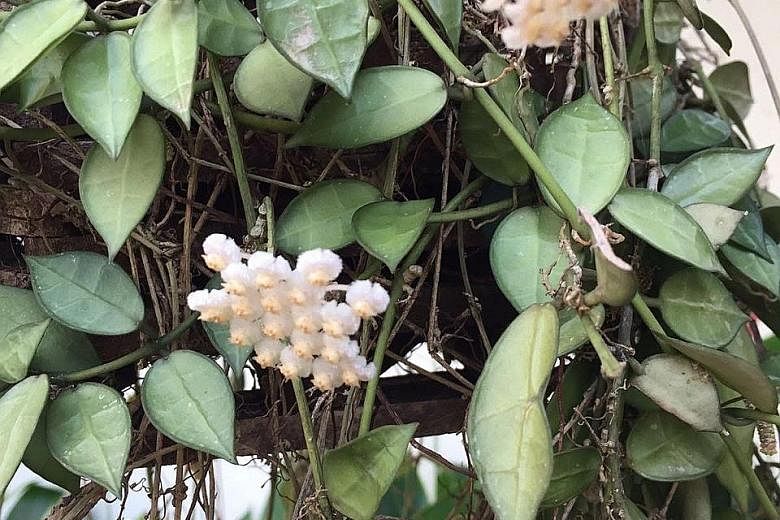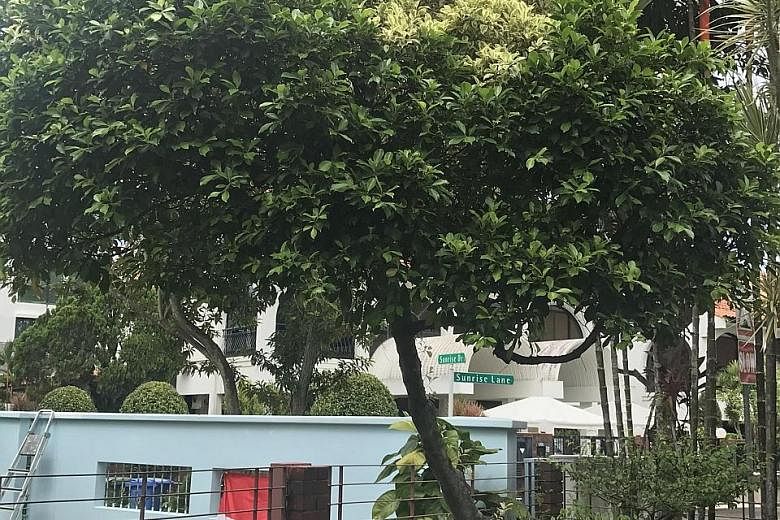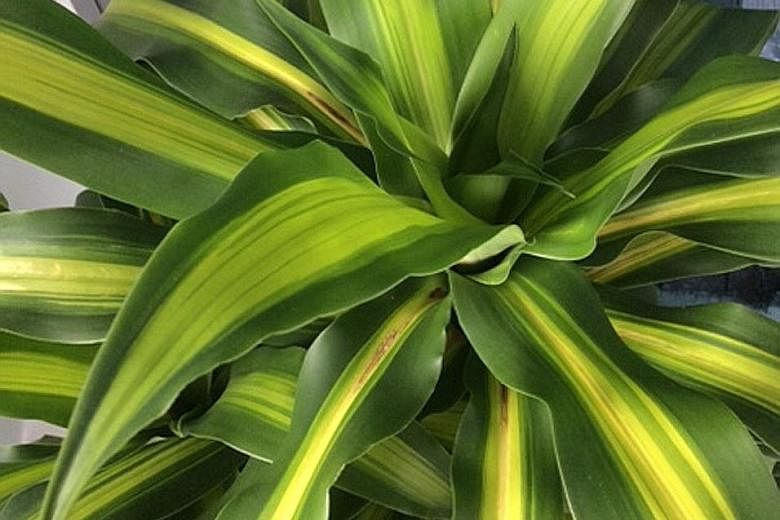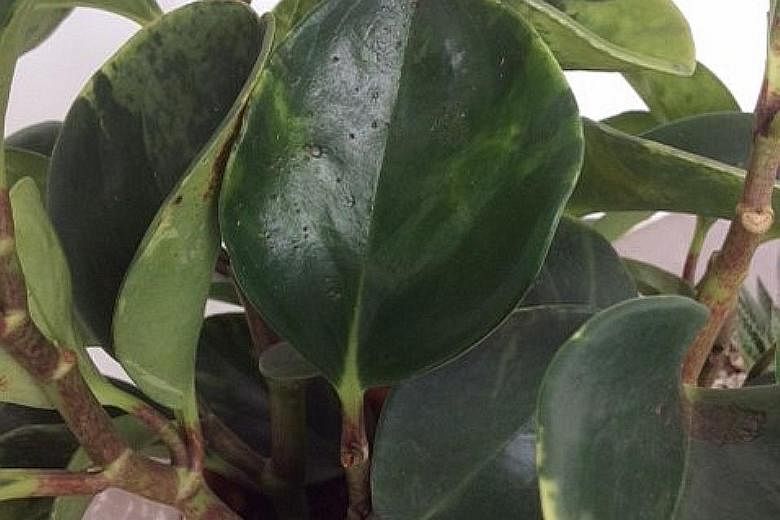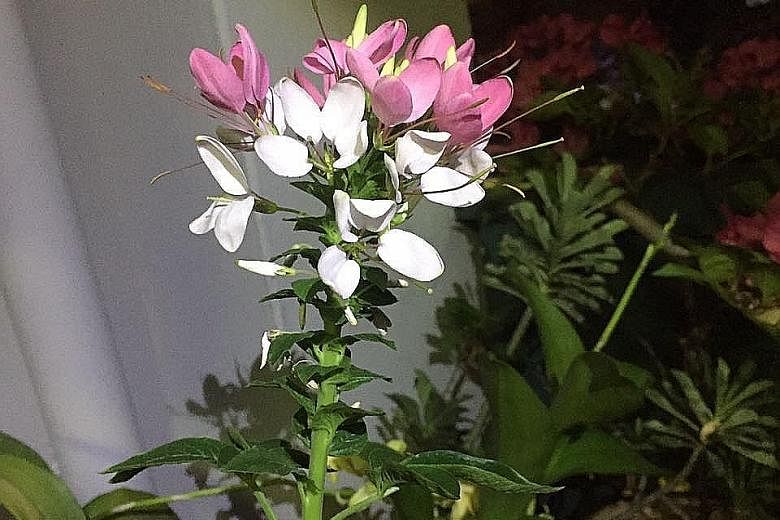Papaya's hermaphrodite flowers can pollinate themselves
My papaya plant was growing well. It flowered and bore some fruit. But the plant has yet to bear fruit for a while now. Why did this happen? Also, how do I differentiate between a young female and male papaya plant?
Tan Swee Hock
The male flowers of the papaya plant are borne on a long, hanging spray and are quite unlike female and hermaphrodite flowers, which are borne singly on short stalks.
Female papaya plant flowers look more conical and have a fat, roundish ovary cocooned inside.
Hermaphrodite flowers have a cylindrical ovary. As they are bisexual, the flowers have both an ovary and stamens bearing pollen. They can pollinate themselves and do not need a male papaya plant.
Fruit development of papaya plants is dependent on moisture in the root zone. Waterlogged conditions or a lack of water can be detrimental to fruit growing.
It appears your plant grows in the narrow verge next to the road, where the soil can be highly compacted. Ensure there is a layer of organic mulch around the root zone of your plant. Organic mulch can help retain moisture and improve soil conditions.
However, do not allow the mulch to come into contact with the plant's stem. Prolonged contact can lead to rot. You may want to loosen the soil around the roots, taking care not to damage them. This can help improve aeration and drainage of the root zone.
Only select Hoya species have fragrant blooms
What is this plant? It has waxy leaves and small florets that are fragrant when in full bloom. It is a creeper and loves shady areas.
Lim Saw Chin
The plant is a species of Hoya and is likely to be the Hoya lacunosa. Its common name is Porcelain Flower, although this also refers to a range of Hoya species and cultivars, due to the appearance of the flowers.
There are many species and cultivars of Hoya that have been cultivated, though only some produce fragrant flowers.
Many of these plants are climbers and adopt an epiphytic growth habit.
Grow the plant in a media that is largely made up of coconut husk and charcoal chips so that the mix is porous yet moisture-retentive. Do not allow the plant to dry out.
Depending on the species and cultivars, these plants may need filtered or direct sunlight to grow well.
Different coloured leaves may be from rootstock
What is the name of this tree and why does it have two different coloured leaves?
Ken Lai Goh
The tree is likely to be a Ficus cultivar, a type of fig tree, that has variegated leaves with cream leaf edges.
The appearance of green leaves could be due to two reasons. First, the variegation seen in some cultivars is not stable. Plants in this category will gradually turn green.
Another reason for the green foliage could be new growth from the rootstock. Variegated trees are often created by grafting the variegated portion onto the rootstock of a related plant.
If you want only variegated foliage, promptly trim away the green portions of the plant when they appear.
Brown leaf tips caused by chlorine or fluoride in water
My draceana has brown deposits in the centre of its leaves and brown leaf tips. But the new, younger leaves seem normal. I give the plant tap water that I have kept overnight. Why does this happen? There are yellow insects on my peperomia. I have tried washing them off with soapy water and hydrogen peroxide, but the plant looks worse for wear. Can it be salvaged? Finally, my dieffenbachia has fluffy, white spots on the undersides of its leaves. Are these spider mites? I used soapy water to get rid of them, but that did not help.
Kor Soi Wei
Brown leaf tips on draceana plants are common and caused by the chlorine or fluoride in the water you use to irrigate the plant. Leaving the water to stand overnight may not remove these substances from the water. You may want to use rainwater instead.
Another reason for the brown leaf tips could be an irregular watering schedule or that the plant is grown in an overly windy location, where it dries out completely. Ensure the plant is watered regularly and placed in a protected, well-lit location.
Your peperomia is affected by scale insects and the dieffenbachia has a mealy bug problem. If the infestation is not too severe, scale insects can be removed with a soft toothbrush, while mealy bugs can be removed by washing the leaves with a strong jet of water.
But if the infestation is severe, both pests can be managed by spraying the plants' foliage with neem or summer oil, which suffocates them. It is important to follow the label instructions to ensure the foliage is not harmed. Repeated applications are often required to keep the pest populations low.
Both plants need at least six hours of filtered sunlight to thrive. Happy plants are healthy plants - provide plants with optimal growth conditions to keep them pest-free.
Spider Flower is an annual plant
I found this plant growing in my flower pot. Its flowers are pink in the evening and white the next morning. What is it?
Gien Siew Moh
This plant is commonly called the Spider Flower and its botanical name is Cleome hassleriana. It grows largely as a herbaceous annual plant that dies after flowering and producing seeds.
Do remember to collect the seeds, which you can use to grow new plants. Otherwise, the seeds may disperse naturally and land in nearby flower pots, where seedlings will compete for room with other plants.
The Spider Flower requires moist, well-drained and fertile soil to grow and flower well. Give it at least six hours of direct sunlight every day.
• Answers by Dr Wilson Wong, a certified practising horticulturist and founder of Green Culture Singapore (www.greenculturesg.com). He is also an NParks-certified park manager.
• Have a gardening query? E-mail it with clear, high-resolution pictures of at least 1MB, if any, and your full name to stlife@sph.com.sg
